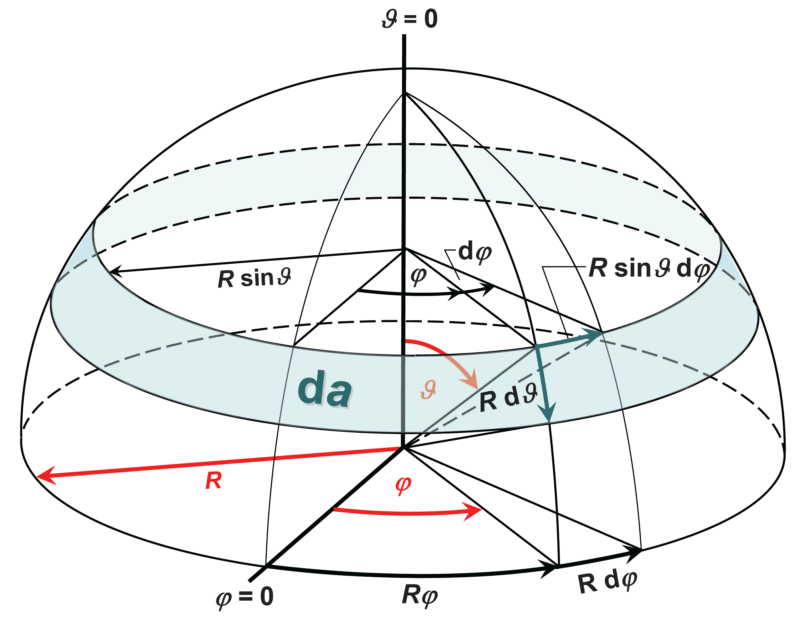Supplement 1.7: Radiation quantities and radiometry (4/5)
The radiant intensity ... continued from the previous page
For an isotropic emitter with direction-independent beam intensity, the integral can be solved. In the case of a conical solid angle, as shown in the diagram in the left-hand column on the previous page, but oriented towards the zenith, the azimuth angle varies from 0 to . The zenith angle varies from 0 to half the aperture angle :
This solution is an alternative to the calculation in the example Efficiency of a lens collimator on the previous page.
For anisotropic emitters whose emission is symmetrical about an axis, the integral can be partially solved. To do this, we consider the following graph, which shows an axially symmetrical solid angle around the vertical axis (the zenith axis) and appears as a band wrapped around the hemisphere. This solid angle, which is also differential, is:
By assuming a radiant intensity that depends only on the zenith angle ϑ, the emission can be integrated over the azimuth angle φ:

A special type of anisotropic emitter is the cosine emitter or Lambert emitter, named after the mathematician and physicist Johann Heinrich Lambert (1728–1777). These emitters are discussed in Supplement 1.8.
Methods for measuring radiant intensity are presented in the section on radiance.
